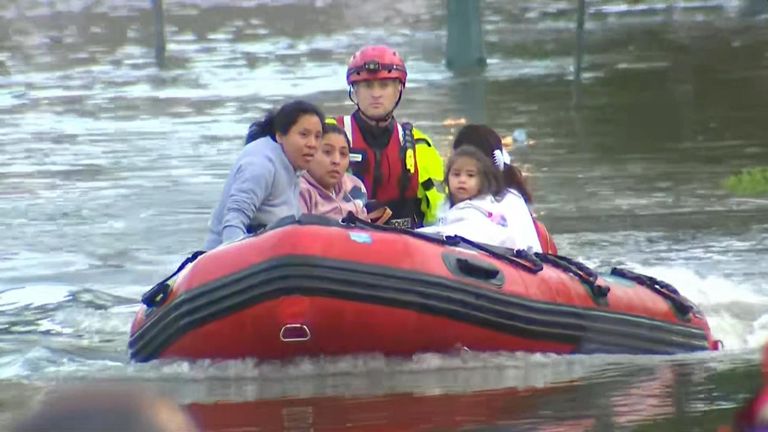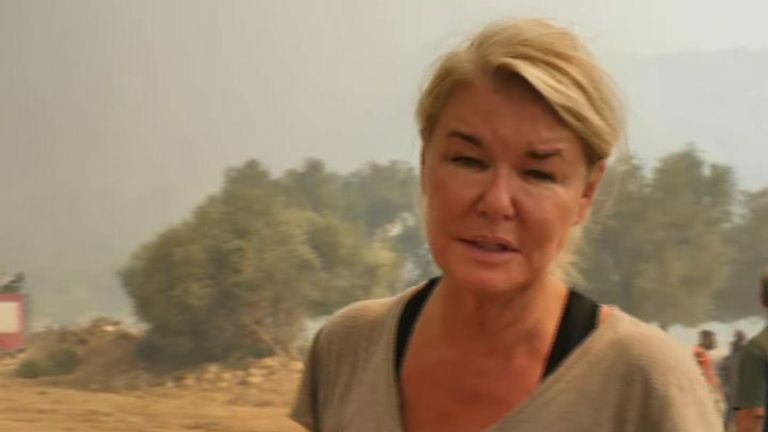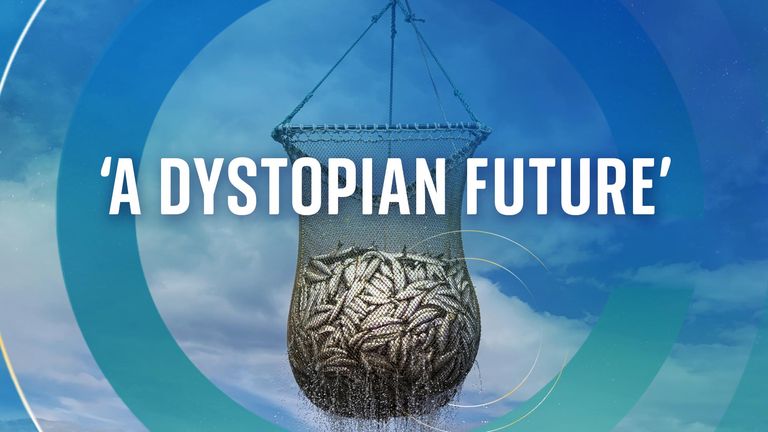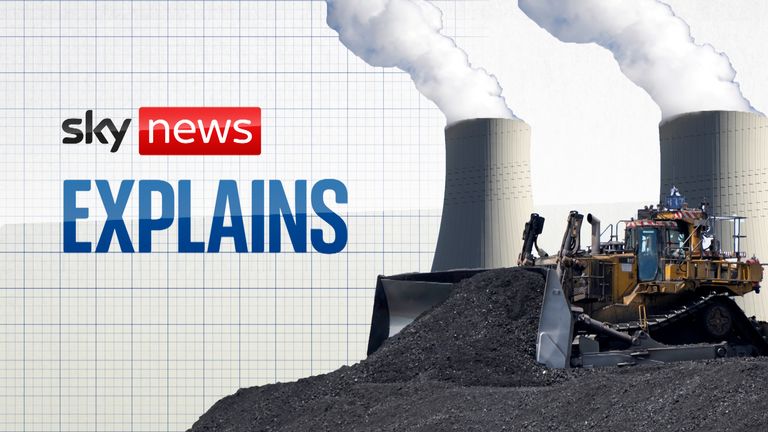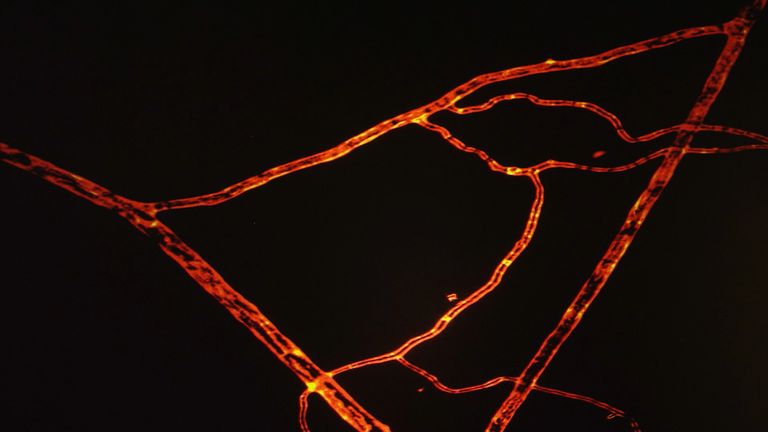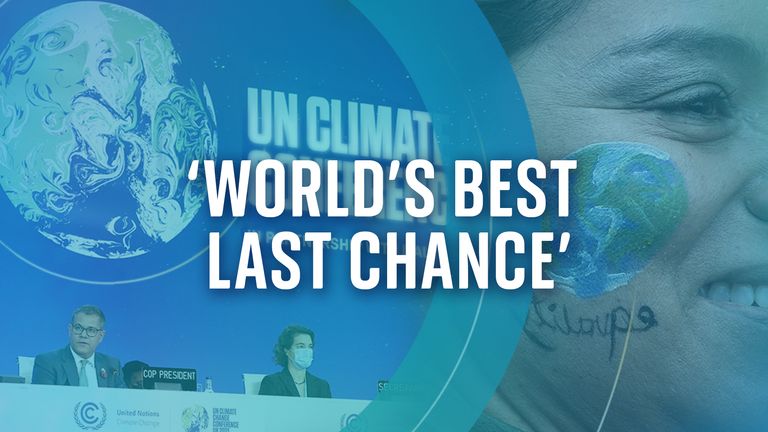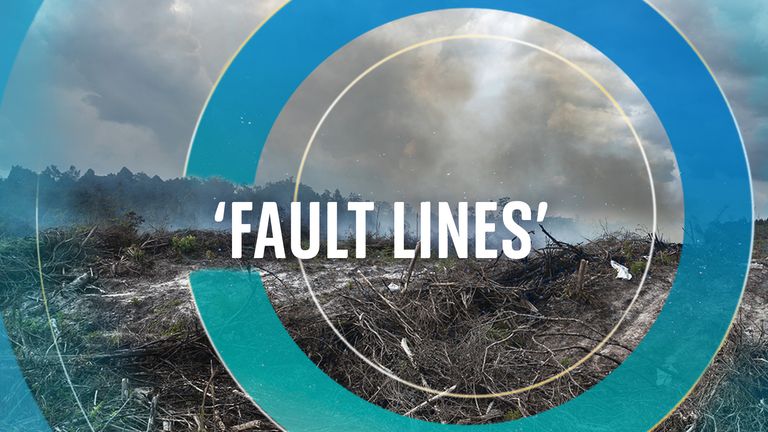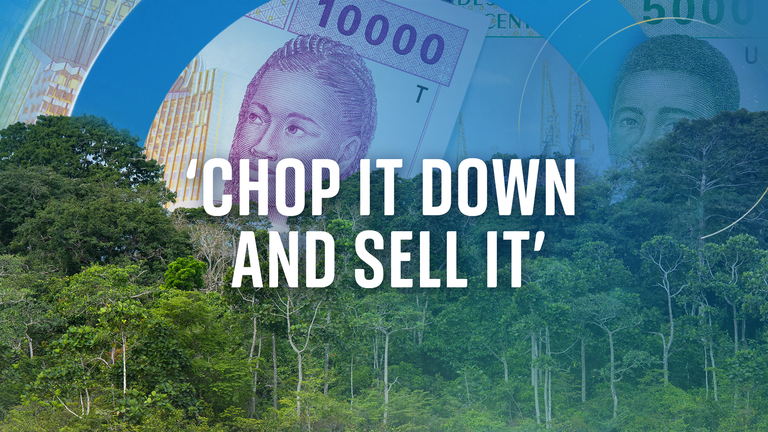2021 was the year that warnings on climate change went into overdrive.
It was the year that scientists seemed to run out of patience.
And it was the year that the consequences of climate change finally, indisputably, arrived at the doorstep of the western world.
By summer, the UN’s special climate panel declared global warming perilously close to the point of no return, with humans “unequivocally” responsible for driving irreversible changes to our planet.
UN Secretary General Antonio Guterres called the situation “a code red for humanity”.
As the alarm bells rang ever louder, a series of extreme weather events unfolded across the globe.
People drowned on subways in China, and in basements in New York City.
They froze to death in Texas.
They lost homes and livelihoods in the flooded streets of Germany and Belgium.
They fled the hillside villages of Turkey and Greece as wildfires tore through tinder dry scrub.
They ran in terror from collapsing glaciers in the Himalayas.
They suffered heat strokes in the normally mild Pacific Northwest.
In communities from the Marshall Islands to the Maldives, they watched the ocean creep ever closer.
And they starved in Madagascar.
At the same time, 2021 was the year scientists became more confident about linking these conditions and events directly to our warming world.
The fingerprints of climate change, they said, are increasingly evident on everything from more frequent and severe storms and rainfall, to punishing heatwaves and droughts.
Many countries accept this and are scrambling to respond, rightly calculating that the cost of doing nothing will eventually far outweigh the cost of acting now.
They understand that climate change, in military terms, is a threat multiplier.
More plainly, it makes everything worse – already squeezing the planet in countless ways.
And if it is not limited, and limited quickly, a dystopian future awaits the rich and the poor and everyone in between.
Communities and economies will become increasingly destabilised as crops stop growing from saltwater intrusion or drought or storms, or it becomes simply impossible to work outdoors in the heat, or catch fish in a warming sea.
In morphing conditions, disease and pests will be able to flourish where they have not before, as has happened with ticks carrying Lyme.
More extreme weather everywhere will prompt unpredictable, unsustainable and costly energy demand as people try to heat or cool themselves.
The oceans and the rivers that built the wealth and influence of our great cities, from London to New York and from Shanghai to Miami, will become less representative of privilege and more and more of a threat.
Homes and businesses built in vulnerable places might become uninsurable, or unmortgageable, or worthless.
The billionaires of Palm Beach putting their mansions on stilts know what is coming, but the vast majority won’t be lucky enough to adapt and stay put in relative comfort.
As people suffer more hardship, governments will become weak and unstable and conflict will ensue.
In some regions, extremists will step in to exploit vulnerable populations, as they have done in Mali and Somalia.
Elsewhere commerce and trade will be upended – the melting ice in the Arctic opening a new and precious sea route at the top of the world that America and Russia are currently manoeuvring to control.
Competition for diminishing resources will begin in earnest.
Eventually there will be widespread food and water insecurity, and as great swathes of our planet become unliveable, hundreds of millions will be forced to migrate, cramming into a narrowing slither of earth with conditions favourable to staying alive.
This is already happening in South America’s dry corridor, Southeast Asia and the African Sahel.
As author Parag Khanna recently wrote rather bleakly: “Some of this would have been likely even without climate change – but is almost certain because of it.
“This century we are projected to reach ‘peak humanity’, our maximum species population of almost 11bn.
“From that point forward, survival becomes a distribution game. How will we choose to organise ourselves across the planet’s 150 million square kilometres of territory?”
With the prospect of unchecked warming flashing as a terrifying possibility in the distance, 197 nations gathered in Glasgow for the COP26 UN climate change summit.
The assembled world leaders faced a clearly defined but fiendishly complicated problem.
Every year, some 50 billion tonnes of greenhouse gasses are pumped into the atmosphere.
By 2050, that number has to be net zero. That’s it.
That is what will keep 1.5C of warming above pre-industrial levels within reach, the level deemed “safe”, although of course for some it will be anything but.
We are already hovering at 1.1C.
It is for this reason that America’s special envoy John Kerry described Glasgow as the world’s “last best chance” to avert climate catastrophe.
There was intense pressure to deliver. And it did. Just.
As he gavelled through the Glasgow Climate Pact, summit president Alok Sharma choked back tears of simultaneous relief and frustration, declaring 1.5 to be alive but on life support.
There was relief because the pact contained an agreement for all the nations present to increase their ambition to reduce carbon emissions by the end of next year, a hugely important shift away from the previous five-year cycle given how little time there is left to act.
Relief and even surprise that for the first time ever, a COP agreement contained references to fossil fuels, in this instance phasing down unabated coal use and inefficient fossil fuel subsidies.
Success too on strengthening climate finance for poorer nations, agreeing on a framework for global carbon markets, and nailing down a common reporting process for carbon emissions.
In addition to the pact there were also big decisions on limiting methane, ending deforestation, and committing trillions of dollars to climate-friendly investments.
Lots to be hopeful about.
But the frustration was palpable everywhere as COP26 also revealed the fault lines that still exist in the battle against climate change.
Lower income nations still do not feel financially supported enough to deal with all the changes already locked in as a result of climate change, let alone commit to drastic reductions in carbon emissions in the future to help solve a problem that they bear little responsibility for.
And a high drama, last minute (and for some highly cynical) intervention from India and China watered down the language on fossil fuel.
Both countries are amongst the world’s largest polluters.
India in particular is in the process of trying to lift millions of its citizens out of poverty using the very same fossil fuel dependent economy and industry that made the western world rich and comfortable.
Prime Minister Narendra Modi simply does not see why he should give up the same economic opportunity because those sitting smugly in highly developed nations have decided it is time to do so.
He may be positioning, as China is, to become a renewables super power, but Mr Modi wants compensation and investment in return for turning away from fossil fuels sooner than he would like to.
So do many, many others.
Gabon in central Africa is standing at its own kind of crossroads as its oil economy dwindles.
The only other natural asset there is the stunning primary rainforest that covers most of the country – part of the great Congo Basin, known as the lungs of Africa.
The easy and obvious thing to do is what so many developing countries with tropical forests have done before, which is to chop it down and sell it.
But Gabon is trying to develop a foreign investment structure that uses the forest as an underlying asset, ensuring its survival.
Making conservation commercially beneficial is a noble and innovative approach, but it hasn’t taken off yet.
If it doesn’t soon, Gabon will have no choice.
Nations all over the world are facing dilemmas like this, at the very moment the situation demands they turn outwards and prioritise the needs of the planet over the domestic pressures they face at home.
Germany may have a new green mandate, but what of reluctant Australia and its mining communities?
Will Boris Johnson’s government be able to decarbonise heating in homes and electrify transport without imposing punitive upfront costs on consumers?
How will the Treasury make up an estimated £30bn shortfall in fuel duties once we all start driving electric cars?
Will the planet be able to secure enough supplies of copper, lithium, nickel and cobalt – all critical to the green revolution?
Are the world’s power grids ready to cope with renewable energy being used at the necessary scale? Will new nuclear power end up filling any gaps and can it be built in time?
Will US President Joe Biden be able to convince Congress to pass his Build Back Better plan which contains crucial climate legislation?
Will India, China and other big developing polluters find a way to do more to reduce carbon emissions, as they must if we are to hit global targets?
And will anybody find an affordable, scalable way to decarbonise cement and steel production?
None of these questions have been answered yet.
And they must be, in the coming “decisive decade”.
Glasgow proved, as messy and imperfect as it was, that there is a genuine will to try.
Politics must not get in the way


